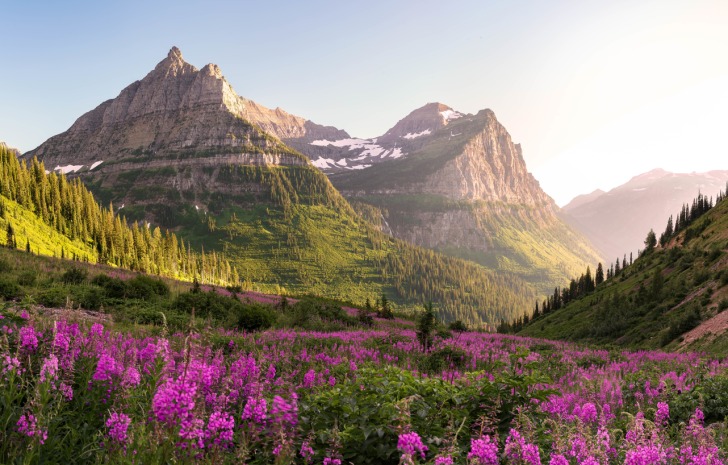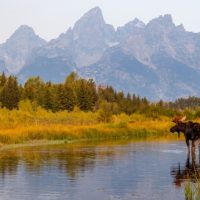About half of the population has a fear of snakes.
On the other hand, some people are fascinated by snakes and enjoy spending time with them.
Regardless of which category you fall into, you should know about Montana‘s snakes.
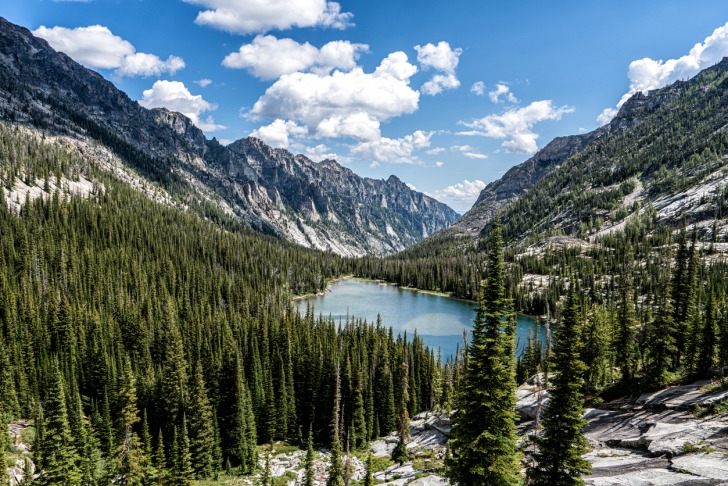
Contents
So… Are There Snakes in Montana?
Yes. There are 10 species of native snakes in Montana, which is lower than most states.
Florida, for example, has a total of 46 native species of snake.
Montana has fewer snakes than most states, in addition to less diversity.
This means you are unlikely to encounter a snake in the state.
Snake Species in Montana
Montana’s snake population might be small, but it’s certainly interesting.
Let’s take a look at Montana’s snake species.
Prairie Rattlesnake
We’ll start with the one that you should worry about.
This is the only venomous snake found in the state.
This snake grows from 1 and 1/2 to 5 1/2 feet in length.
They have a brown body with a spot pattern.
They can be identified by their triangular head, and the rattle at the end of their tail.
Rattlesnakes aren’t usually aggressive.
They will use their rattle as a warning alarm and will run away if possible.
However, if they feel cornered or threatened, they may strike.
Most bites occur from people accidentally stepping on or near the snake, or handling them.
While the thought of encountering one of these serpents can be scary, there are only about 16 bites from rattlesnakes in Montana.
These bites can be fatal without treatment, but deaths are very rare with proper medical care.
Garter Snakes
There are three species of this snake found in Montana.
These are common garter snakes, plains garter snakes, and terrestrial garter snakes.
They can grow to 2 to 4 feet in length.
They get their name from the three stripes that run down the length of their back, which are said to resemble a woman’s garter.
Garter snakes aren’t dangerous to humans, but they do have mildly toxic venom.
Most species are terrestrial, but the plains garter snake enjoys the water.
Other Montana Snakes
Other Montana snakes include the gopher snake, North American racer, northern rubber boa, plain hognose snake, and the milk snake.
Gopher snakes are the largest snakes found in Montana.
They look similar to a rattlesnake, but they are nonvenomous.
Hognose snakes have an upturned nose, which is where they get their name.
The northern rubber boa is one of only two boa species found in the U.S.
Is it Safe to Go on a Trek in Montana?
Montana is a paradise for nature lovers.
There are 56 counties in Montana.
46 of these are classified as frontier counties, which means they have fewer than 6 people each square mile.
The sparse population goes along with 30 million acres of public land, and barely inhabited privately owned areas.
Given all this unspoiled wilderness, it’s natural to wonder if it’s safe to explore Montana.
Montana is considered safe, but there are some dangers that you should be aware of before exploring Big Sky Country.
Wildlife Dangers
You know that there’s only one dangerous snake in Montana, but there are plenty of dangerous animals you should know about.
The state has about 35 animal attacks each year, making it the second most dangerous state in terms of animal attacks.
The top state is Texas, with 559 attacks each year.
Moose are one of the largest dangers in Montana.
Moose are typically considered more dangerous than bears and are responsible for about 500 attacks each year around the U.S.
Bears are another animal you should be concerned about.
Bears certainly seem scarier than moose.
However, bears have been responsible for only 11 deaths in the last 50 years.
Natural Hazards
The biggest natural hazard in Montana is the weather.
In addition to temperatures that can quickly be fatal if you are caught unprepared, Montana has frequent blizzards.
Wildfires are another danger in Montana.
Since 2000, there have been more than 50 wildfire natural disaster declarations.
Over half of all homes in the state are at high or moderate risk of wildfires.
Interesting Snake Facts in Montana
One of the most interesting facts about snakes in Montana is that they often travel for miles.
Rattlesnakes usually travel about 5 miles, while other species may roam for up to 33 miles.
Montana winters are harsh with temperatures falling well below 0 degrees.
The state holds the record for the coldest temperatures in the continental U.S., with a breathtaking temp of -70 degrees.
It’s not uncommon for lows to be -10 to -50 degrees.
Snakes are cold-blooded, which means they can’t control their body temperature.
Instead, they rely on their environment.
This is why it’s common to see snakes basking in the sun on cooler days.
How do snakes survive Montana winters?
They find burrows.
The burrows are holes that allow them to get deep underground.
The ground provides insulation, which keeps them much warmer than the surface temperature.
They travel to find these life-saving winter hideaways.
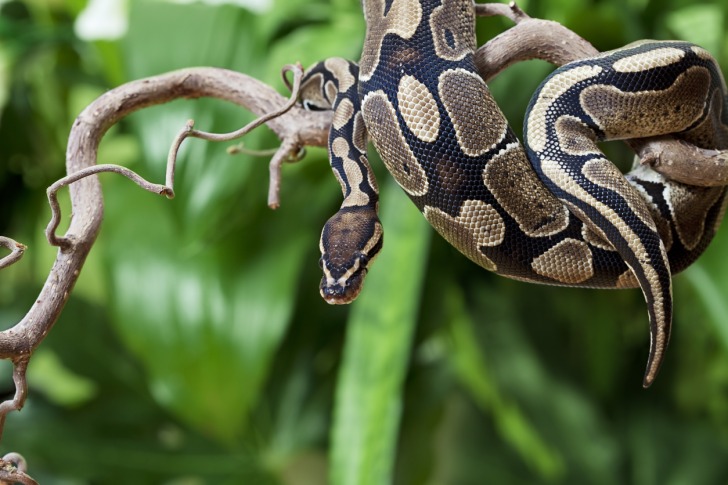
3 Safety Tips for Exploring Nature in Montana
1. Know the Area
Before you go on a trek, you should learn about the area.
This includes wildlife, trails or directions, and what the weather will bring.
2. Stick Together
It’s best to have a partner or even a group of people, when in Montana’s uninhabited areas.
If there’s an emergency, there’s someone there to help.
It also makes it less likely that you’ll have a close encounter with wildlife because animals tend to avoid groups of people.
If you do go out alone, it’s crucial to let someone know where you are going, and when you’ll be back.
If you don’t return, they will contact the authorities.
3. Be Prepared
Lastly, be prepared before you leave the house.
In the winter, you should have cold-weather gear.
Food and a heat source, like a candle or lantern, are also a great idea.
Bear spray and insect repellents are important.
You should also bring rain gear.
Lastly, bring a map and compass, or a GPS device for navigation.
Summary
Montana does have snakes, but only the prairie rattlesnake poses any danger to humans.
If you explore Montana, you should keep an eye out for native snakes, but there’s no reason to fear them.
Montana Safety Overview
READ THE FULL REPORT: Montana Safety Review
Safety Index: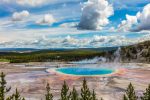
- OVERALL RISK: LOW
- TRANSPORT & TAXIS RISK: LOW
- PICKPOCKETS RISK: LOW
- NATURAL DISASTERS RISK: MEDIUM
- MUGGING RISK: LOW
- TERRORISM RISK: LOW
- SCAMS RISK: LOW
- WOMEN TRAVELERS RISK: LOW
Frequently Asked Questions
What time of year are snakes out in Montana?
Snakes are active from April through September.
In October, they typically go underground and go into a hibernation state.
It’s rare to see a snake out of its den in the winter months.
How can I tell if a snake is poisonous?
There are a few ways to tell if a snake is poisonous in Montana.
The prairie rattler is the only venomous snake in the state, which makes it easier to identify.
Rattlesnakes have a rattle at the end of their tail.
They also have a broad, arrow-shaped head.
What should I do if I see a snake?
If you see a snake, it’s best to leave it alone.
There’s no reason to kill or harm a snake, particularly a nonvenomous one.
If you are in the wilderness, leave the snake alone.
If you are in a residential area, you can contact a professional to remove the snake.
They will be relocated to an uninhabited area.
